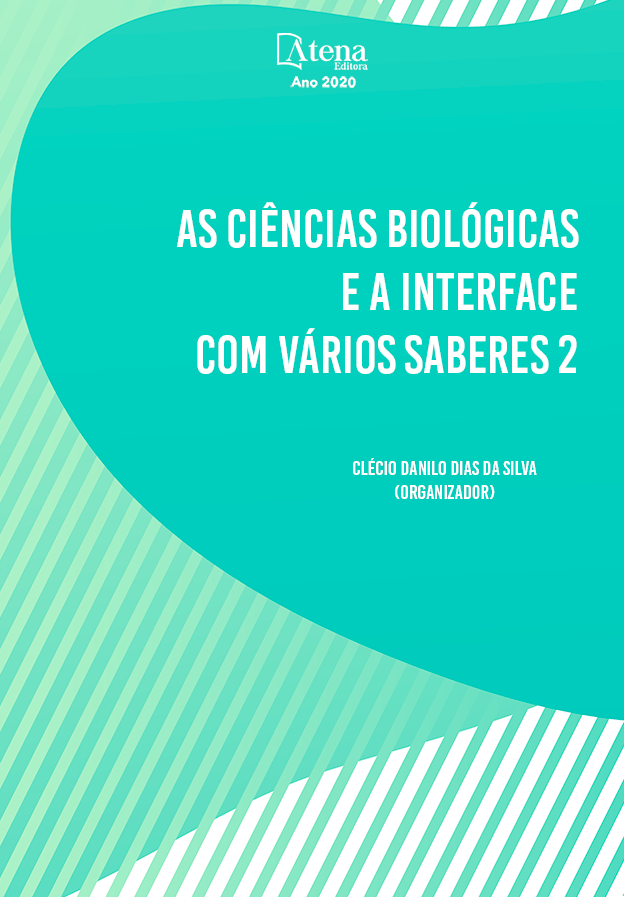
MANDALA SENSORIAL COMO RECURSO PEDAGÓGICO PARA INCLUSÃO DE ALUNOS COM NECESSIDADES ESPECIAIS NO ENSINO DE BOTÂNICA E EDUCAÇÃO AMBIENTAL
Ao longo da história observa-se uma mudança da percepção do homem em sua relação com a natureza, primeiramente acreditava-se que esta era um elemento primordial, após, que o homem a dominava, tendo a mudança dessa concepção iniciada entre as décadas de 60 e 70, devido ao avanço dos movimentos ambientalistas, e continuadamente pela inserção da Educação Ambiental a partir da década de 90 nos espaços educacionais. Este estudo analisou os impactos negativos que tal concepção equivocada da natureza causou aos vegetais, pois dentre os demais seres vivos, talvez sejam os mais ignorados pelos seres humanos, influenciada pela denominada “cegueira botânica” e por mudanças de hábitos culturais e sociais, como a crescente urbanização, êxodo rural, distanciamento da natureza, etc. Atrelado a isso, acrescenta-se o ensino defasado e desestimulante de Botânica. Ademais, se o ensino de Botânica e Educação Ambiental é deficitário para alunos com “perfeito” desenvolvimento e cognição, imagine-se como esses problemas afetam alunos com necessidades especiais... Assim, utilizou-se a Mandala Sensorial, construída na Universidade Tecnológica Federal do Paraná – Câmpus Dois Vizinhos, para promover a construção do conhecimento de Educação Ambiental e Botânica, além de promover a inclusão de alunos atendidos pela sala de recursos multifuncionais de um Colégio de Dois Vizinhos-PR, nessa abordagem, pois a Mandala permite o estímulo dos cinco sentidos humanos contribuindo para que o conhecimento seja construído mitigando as limitações de seus visitantes. Utilizou-se a metodologia qualitativa para análise dos resultados obtidos por meio da coleta de dados realizada através de entrevistas semiestruturadas. Realizou-se uma explanação sobre Educação Ambiental e Botânica, e duas dinâmicas práticas, sendo uma forma de promover o processo de aprendizagem dos participantes. Concluiu-se que a Mandala Sensorial como recurso pedagógico contribuiu para a construção do conhecimento pelos participantes, aumentou a percepção ambiental destes e os incluiu de forma efetiva no processo de ensino-aprendizagem.
MANDALA SENSORIAL COMO RECURSO PEDAGÓGICO PARA INCLUSÃO DE ALUNOS COM NECESSIDADES ESPECIAIS NO ENSINO DE BOTÂNICA E EDUCAÇÃO AMBIENTAL
-
DOI: 10.22533/at.ed.38220021022
-
Palavras-chave: Meio Ambiente; Recurso Pedagógico; Inclusão; Mandala Sensorial
-
Keywords: Environment; Pedagogical Resource; Inclusion, Sensory Mandala
-
Abstract:
Throughout history it is observed a change in the perception of man in its relationship with nature, first it was believed that this was a primordial element, after that man dominated it, with the change of this conception initiated between the 60s and 70, due to the advancement of environmental movements, and continuously for the insertion of Environmental Education from the 90s in educational spaces. This study analyzed the negative impacts that such a misconception of nature caused to plants, because among other living beings, they are perhaps the most ignored by humans, influenced by the so-called “botanical blindness” and by changes in cultural and social habits, such as increasing urbanization, rural exodus, distance from nature, etc. In addition to this, adds up the outdated and discouraging teaching of Botany. Furthermore, if the teaching of Botany and Environmental Education is deficient for students with "perfect" development and cognition, imagine how these problems affect students with special needs … Thus, it was used the Sensory Mandala, built at the Federal Technological University of Paraná - Câmpus Dois Vizinhos, to promote the construction of knowledge in Environmental and Botanical Education, in addition to promoting the inclusion of students attended by the multifunctional resource room of a College from Dois Vizinhos-PR, in this approach, because the Mandala allows the stimulation of the five human senses contributing for the knowledge to be built mitigating the limitations of its visitors. Qualitative methodology was used to analyze the results obtained through data collection performed through semi-structured interviews. An explanation about Environmental and Botanical Education was executed, and two practical dynamics, being a way to promote the participants' learning process. It was concluded that the Sensory Mandala as a pedagogical resource contributed to the construction of knowledge by the participants, increased their environmental perception and included them effectively in the teaching-learning process.
-
Número de páginas: 18
- Daniela Macedo de Lima
- Maiara Andrêssa Pozzebon


